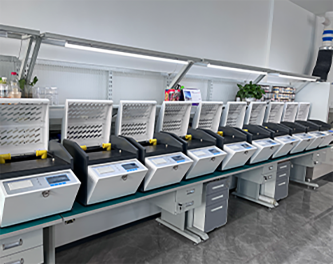 English
English


Distillation Techniques and Apparatus for Efficient Separation Processes
Distillation Equipment and Processes An In-Depth Overview
Distillation is a widely used separation process that exploits differences in boiling points to separate components from a mixture. It is essential in various industries, including petrochemicals, pharmaceuticals, and beverage production. The effectiveness of distillation relies heavily on the type of equipment used and the specific processes involved.
Types of Distillation Equipment
1. Distillation Column One of the most critical pieces of equipment in distillation is the distillation column. This vertical vessel is designed to provide a large surface area for vapor and liquid to interact. The column can be packed with trays, packing materials, or can be structured as a continuous column. Tray columns use perforated plates to create contact between rising vapor and descending liquid, while packed columns use a bed of packing materials to facilitate mass transfer.
2. Reboiler Positioned at the bottom of the distillation column, the reboiler heats the liquid to produce vapors that rise through the column. This equipment is crucial for maintaining the process temperature and ensuring efficient separation.
3. Condenser At the top of the distillation column is the condenser, which cools the rising vapors, causing them to condense back into liquid. These condensed liquids, known as distillate, can be collected and further processed or used as final products. The design of the condenser can significantly impact the overall efficiency of the distillation process.
4. Separators After condensation, some mixtures may have remaining unsplit components. Separators are used to further refine the output by separating the desired products based on their physical or chemical properties.
Distillation Processes
distillation equipment and processes

Several distillation techniques can be employed depending on the nature of the feed and the desired products
1. Simple Distillation This process is used for separating a liquid from a solution or a mixture with significant differences in boiling points. It involves heating the mixture to boiling and then condensing the vapor to isolate the desired component.
2. Fractional Distillation More complex than simple distillation, this method is used for separating liquid mixtures with closer boiling points. Fractional distillation operates using a packed column that facilitates multiple vaporization-condensation cycles, resulting in a better separation.
3. Steam Distillation Commonly employed in the extraction of essential oils, steam distillation uses steam to extract volatile compounds. This process is especially useful for heat-sensitive materials as it allows for lower processing temperatures.
4. Vacuum Distillation Employed for high-boiling point compounds, vacuum distillation lowers the pressure within the distillation column, thereby reducing the boiling point of the components. This technique is vital for substances that may decompose or react at higher temperatures.
Conclusion
The efficiency of a distillation operation is influenced by the choice of equipment and the specific process used. As industries evolve, advancements in distillation technology continue to enhance separative efficiency, reduce energy consumption, and lower environmental impact. Whether in the production of fuels, pharmaceuticals, or beverages, mastering distillation equipment and processes is essential for achieving optimal results and quality in chemical engineering applications. Understanding these fundamentals allows engineers and technicians to innovate and refine their approaches to separation processes, ensuring product purity and sustainability in various industrial applications.
-
Differences between open cup flash point tester and closed cup flash point testerNewsOct.31,2024
-
The Reliable Load Tap ChangerNewsOct.23,2024
-
The Essential Guide to Hipot TestersNewsOct.23,2024
-
The Digital Insulation TesterNewsOct.23,2024
-
The Best Earth Loop Impedance Tester for SaleNewsOct.23,2024
-
Tan Delta Tester--The Essential Tool for Electrical Insulation TestingNewsOct.23,2024





